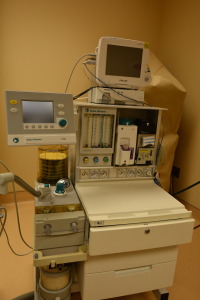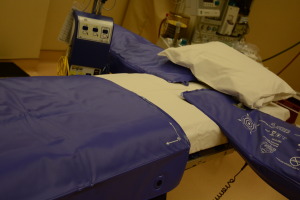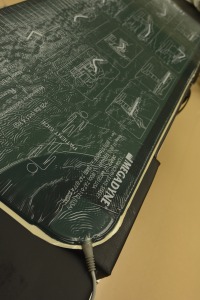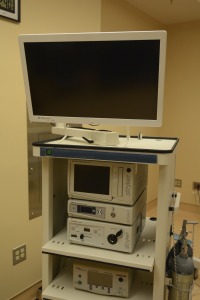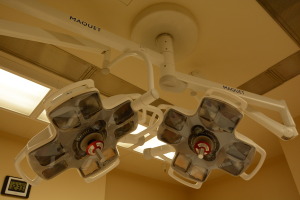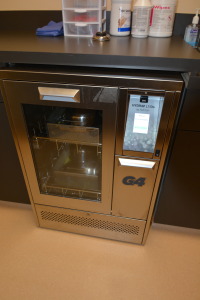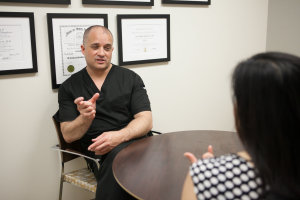Patient Safety During Surgery
The safety of our patients is our paramount concern and the success of both surgery and pregnancy are a very close second.
Patient safety begins with our scheduling interview. The interview is extensive and is designed to screen patients for medical and surgical conditions that could make outpatient surgery more risky. We are primarily focused on screening for severe cardiac, pulmonary, or renal conditions, which could make the patient a less than ideal outpatient surgical candidate. Additionally we screen for medical and surgical conditions that could increase the risk of uterine or tubal adhesive disease and for hypercoagulabililty disorders.
Nursing staff
A key component of patient safety is our nursing staff. We make an effort to recruit skilled nurses who have previous experience in providing either inpatient or surgical patient care. One of our main goals is retention of nursing staff and to minimize staff turnover so staff are knowledgeable and experienced about the services we provide.
Scheduling nurses focus primarily on efficient scheduling of patients, processing operative and pathology records, and assisting patients with travel and hotel related concerns. Surgical nurses focus on the admitting pre-operative patients on the day of surgery, readying the patient for surgery, circulating in the operating room, and recovering the patient in the post operative recovery room. Together scheduling and surgical nurses assist with pre-operative consultations and the post-operative evaluation. Our nurses are extremely important in overseeing our post-operative follow-up and answering patient questions after surgery both by phone and email.
Dedicated surgical facilities
Our facilities are dedicated to sterilization reversal and repair of blocked tubes.
Patients at our facility are provided greater privacy in the treatment of their infertility than at facilities where a more diverse group of patients are seen. Our patients don’t have to share surgical facilities with others who may be suffering from more serious infectious disease process and we feel this minimizes the risk of transmission of infection and decreases the risk of surgical site infection.
Anesthesia
We feel stable skilled anesthesia staff is critical to our patient’s overall experience and safety while under our care. This is why we took the time to find experienced anesthesia providers who are capable of caring for sterilization reversal patients. We have intentionally tried to limit the number of anesthesia providers because it can adversely impact patient care.
When you have a large number of providers rotating through your facility who have a limited understand of what you are doing, then this adversely impacts the care of patients. We have found having stable anesthesia care is a major contributor to our success. Similar to a dance partner, we have worked together for many years and each of us knows without asking what the other is doing. Since we exclusively specialize in infertility surgery, Dr. Monteith and the anesthesia staff have an innate awareness of what is best for the patient at each point in the surgery.
This type of relationship makes for a much smoother surgical experience for staff and patients.
 Inhalational Agents
Inhalational Agents
We utilize the historical anesthesia standard, isoflurane, and the newer more expensive, sevoflurane, inhalational agents. We have had excellent results using isoflurane but we also use sevoflurane for selected cases. Our anesthesia providers feel strongly sevoflurane can provide quicker induction of anesthesia, quicker recovery, and faster time to ambulation and discharge in selected patients. We do not perform regional conduction anesthesia (spinal or epidurals) at our facility because these forms of anesthesia can be associated with increased risk of voiding difficulties after surgery and are not conducive to early ambulation required for outpatient surgery.
Airway management
Over 98% of our patients will have their anesthesia provided with a laryngeal mask. We reserve endotracheal intubation for more difficult airways and for laparoscopy in heavier patients. Laryngeal mask anesthesia is less traumatizing to the airway and has been associated with less post-operative nausea and vomiting.
Dedicated surgical technologist
We have a staff of dedicated Surgical Technologist. These individuals are responsible for keeping our surgical facilities in the finest shape. They have extensive experience in infertility surgery. They are responsible for keeping our operating facility ultra-clean and maintaining our surgical equipment in the best shape. They also first assist Dr. Monteith during surgery and because of their extensive experience they are a key element to keeping the patient’s surgery going efficiently and safely.
Our dedicated surgical technologists are a key element of our surgical staff.
 Patient warming
Patient warming
We are very proactive about warming patients during and after surgery. Adequate patient warming has been associated with quicker recovery from anesthesia and less post-operative nausea. We do not use Bair Hugger warming units because the increased airflow has been associated with an increased risk of surgical site infection and can raise the ambient operating room temperature to an uncomfortable level for surgical staff.
Instead we employ a Hot Dog patient warming system with an underbody mattress, multi-positional arm blankets, and an additional lower torso warming blanket. We have found this provides great warming of patients during surgery and better post-operative recovery.
 Electrosurgery and safety
Electrosurgery and safety
We have done away with the traditional disposable return electrodes and have replaced them with an under body Megadyne mattress. Although this set up is initially more expensive, the Megadyne mattress is almost guaranteed to eliminate patient electrosurgical burns in the area of the grounding pad and is also much easier to use for our nursing staff.
Diagnostic laparoscopy
We offer our patients diagnostic laparoscopy to help evaluate if their tubes are repairable and to help others diagnose the exact point of tubal blockage.
We utilize a Stryker laparoscopy tower with the latest high-definition camera heads that can be autoclaved. It was extremely important to us to have a laparoscopic set up that did not have to be sterilized with potentially hazardous gases and it was unacceptable to us to accept systems, which only provide high-grade disinfection for our laparoscopy systems. We spared no expense in these high definition units because they provide us superior visualization during laparoscopy and can be sterilized completely using the gold standard sterilization system of steam sterilization.
All laparoscopy equipment is steam sterilized and all laparoscopy procedures are done with high-grade optics utilizing 5mm port sites.
 Operating room design
Operating room design
Our operating room was designed exclusively to provide efficient, safe infertility surgery. It is spacious and has ample room for staff, patients, and equipment. Our operating room is fitted with centralized vacuum and centralized oxygen with enough oxygen to last for four weeks of continuous surgery. The room has a dedicated HVAC unit with laminar airflow to control the direction of air flow, minimize particulate air matter, and reduce the risk of surgical site infection.
We have a two-headed Maquet halogen surgical light which deliveries a large amount of light onto the surgical field providing more than adequate visualization during procedures. Our operating room bed is a Maquet surgical bed with more than adequate padding and is fully electronic. We have been very pleased with these surgical items, which have been engineered in France.
Instrumentation processing and sterilization
All surgical instruments are processed in our facility by our dedicated surgical technologist staff. No unskilled staff or third party services are used to process and sterilize instruments and we feel this gives us better quality control. All instruments are processed and sterilized according to the latest recommendations by the Academy of Registered Nurses.
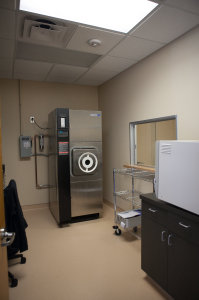
All instruments are then repackaged in the latest German engineered surgical canisters manufactured by Aesculap and steam sterilized in a large floor model Steris steam autoclave. Instruments are never flashed sterilized at our center.
 Patient follow-up
Patient follow-up
Although most of our patients travel to us from out of state, we follow up with patients the day after surgery, when they return home, and 30 days after surgery. Patients are seen in the office on the first post-operative day for evaluation and a conference with Dr. Monteith. Patients are called by staff when they return home and after 30 days patients are contacted by email and evaluated any post-operative complications.
Staff training
An ongoing process
All surgical staff are trained in Basic Life Support, Advanced Cardiac Life Support, and malignant hyperthermia training. Additionally quarterly emergency drills are performed to assure staff are prepared to handle most medical emergencies.

